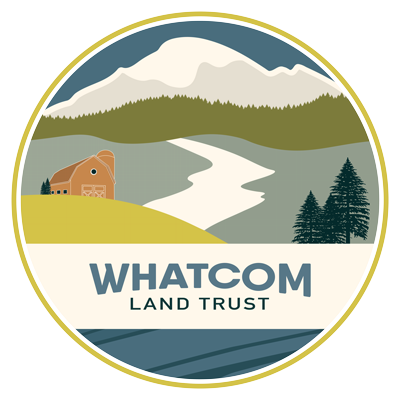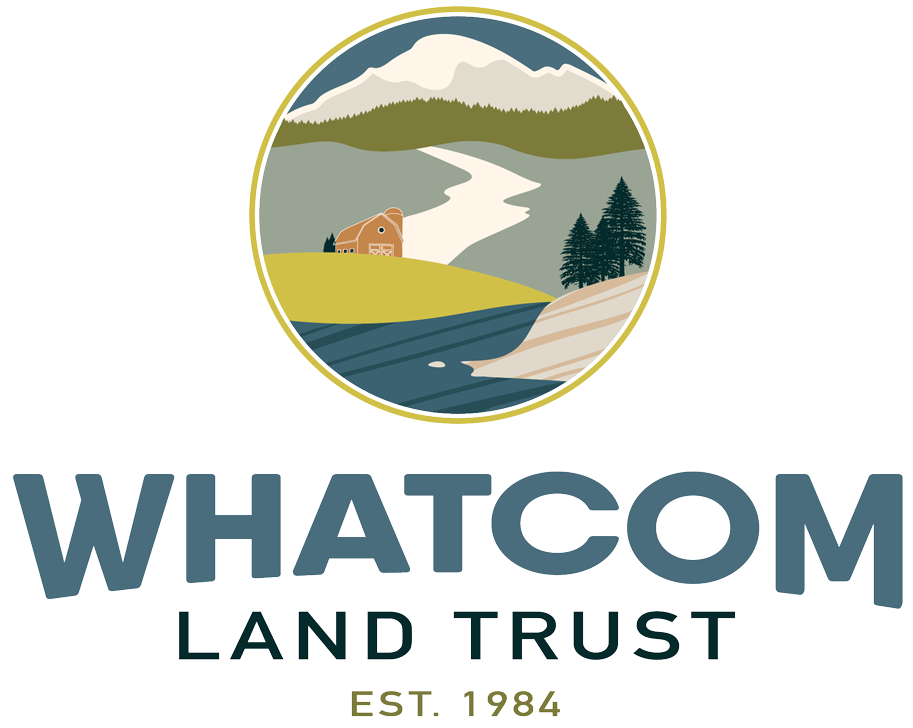40 Years of Conservation, Care and Change at Whatcom Land Trust by Claire Johnston & Lorraine Wilde
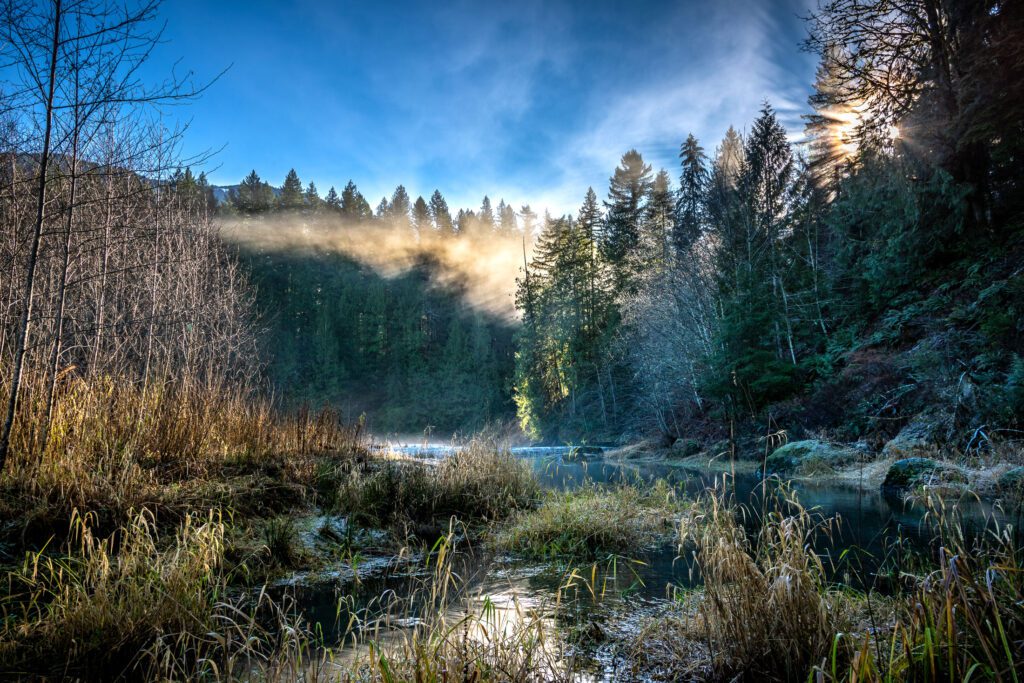
Looking Forward to Forever
Since 1984, Whatcom Land Trust has worked to protect and steward Whatcom County’s special places for future generations of all species. Although thousands of acres have been protected over that time, the vision has remained the same–to protect Whatcom County’s abundant tapestry of lakes, rivers, farms, forests, meadows and wetlands, all of which are vital to our way of life and sense of place.
It is impossible to share the thousands of stories that comprise Whatcom Land Trust’s history and forty year growth and evolution, so just a few key memories must suffice.
There are many wonderful projects to celebrate from the last four decades – Stimpson Family Nature Reserve, Galbraith Mountain, Teddy Bear Cove, Canyon Lake Community Forest, Alluvial Farms, Skookum Creek Reach and part of the Chuckanuts, to name just a few. After forty years of community conservation, Whatcom Land Trust is still protecting land to ensure healthy forests, clean cold rivers, public access, and healthy habitats and corridors for an abundant diversity of life.
Board member Chris Moench, who has served the organization since 1990, noted that, “Stories are central to the community’s embrace of an organization like the Land Trust, because it really represents the vision of how the community relates to its landscape.”
The Early Days: Roots and Relationships
In March 1983, nearly 50 people gathered in the basement of the Dutch Mothers Restaurant in downtown Lynden, Washington to learn how a land trust might preserve Whatcom County’s agricultural heritage. After obtaining 501(c)(3) non-profit status, the first official Board of Directors meeting of the Whatcom Land Trust was held in November 1984.
The initial vision was to protect agricultural land to support local farms and farming infrastructure. According to co-founder and 40-year Board member Rand Jack, the Trust quickly broadened its horizons and, “looked to protect a variety of land–particularly natural areas–that would provide opportunities and protect habitat for animals that were here long before we were,” he said.
The Land Trust quickly grew, building relationships with community members to understand conservation priorities in a rapidly growing county. The organization focused on discrete, individual projects throughout the county. Relationships with landowners and partners were rooted in transparency, integrity and respect.
“I think a lot of what makes the Land Trust really engaging for people is that you’re developing a relationship with them while working toward conservation goals,” said Chris.
Chris recalled the process of working alongside the Clark family to create a conservation easement that protected Clark’s Point from further development.
“My strongest memories from the whole engagement around Clark’s Point were sitting down with Doug and Peggy Clark and talking with them, asking questions about their relationship with Clark’s Point, since they had first come to it,” recalled Chris. “They purchased Clark’s Point, just south of Fairhaven in Chuckanut Bay, and eventually they had three children, each of whom were allocated a little piece on Clark’s Point in order to build their house. One of their children, Patrice Clark, really drove the family’s commitment towards conservation and embraced the concept of a conservation easement with Whatcom Land Trust,” said Chris.
The Clark’s Point Conservation Easement, created in 1990, was a turning point for the Land Trust due to the prominence of the property. As Rand put it, “Everybody in Whatcom County pretty much knows where Clark’s Point is. If you can protect Clark’s Point, you’re an organization worth paying attention to.”
Parklands and Partnerships
The Trust has not only built meaningful relationships with people, but with other organizations and government entities over shared conservation values. The Land Trust has partnered with Whatcom County to establish 19 parks over the last forty years.
The very first County park that the Land Trust helped establish was Teddy Bear Cove–a popular beach including a trail winding through coastal forest, bird habitat, saltwater shoreline and tide pools.
“When it went up for sale, the Land Trust was able to step in and put out a fundraising call to its supporters, raising enough money to acquire the property,” remembers Chris. “And that was done in conversation with the County Parks Director, Roger Despain, at the time. We agreed the County would end up purchasing Teddy Bear Cove from the Land Trust. But the Land Trust was able to act quickly, and that was key to preventing development. Now it’s a beloved County park and the Trust holds a conservation easement.”
The Land Trust has prioritized protecting parks to ensure public access for future generations and connect community members with the land. It’s critical to protect places like Stimpson Family Nature Reserve, “where people can visit and enjoy and appreciate the land. It’s really hard to convince people to protect something if they’ve never seen it or experienced it,” said Rand.
When the Stimpson family first approached the Land Trust, they entrusted the process of determining how to conserve the family’s land to Rand, needing all siblings of the Stimpson family to make a unanimous decision. Rand remembers, Iit was a long process, and I think that now the Stimpson family is delighted with what’s happened. Stimpson has been embraced by the community, it is a real sign of possibility, of hope. You walk these trails, you’ll hardly ever find a piece of trash. I don’t know of any other park where you just walk this every day for a week and you will not pick up a piece of trash,” observed Rand.
“Conservation for the community, by the community…” is listed on the sign at the entrance to Stimpson Family Nature Reserve. That phrase represents the Trust’s commitment to community-focused conservation, and honors the ongoing and special partnership with Whatcom County Parks and Recreation.
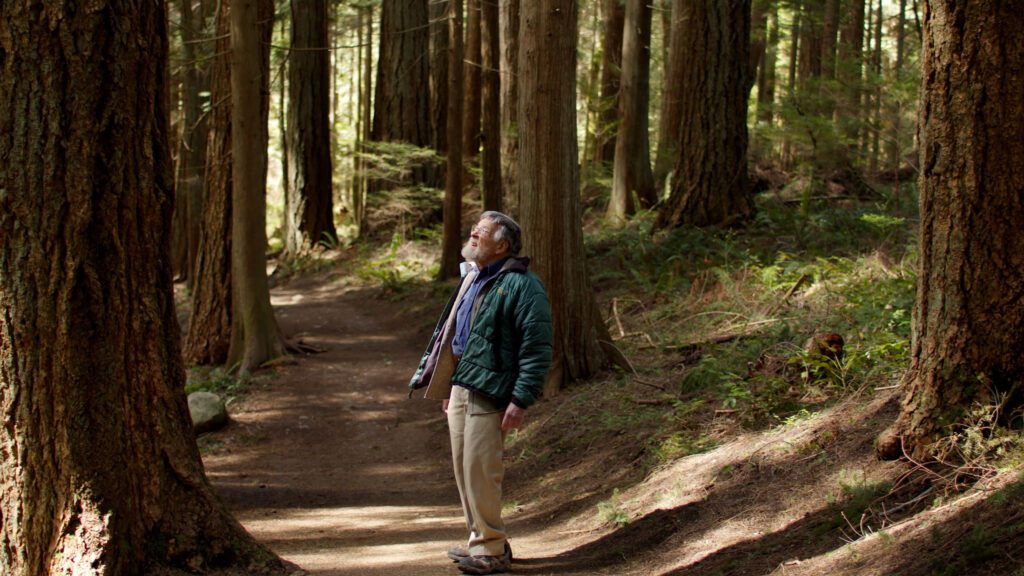
A Changing Landscape with New Challenges
The Land Trust has grown substantially since the protection of Stimpson Family Nature Reserve. Chris remembers joining the board in 1990, when, “The Trust had an annual operating budget of probably under $10,000. There was no office, and certainly no staff.”
In the last decade alone, staff size has nearly doubled to 13 employees, and Land Trust owned land has increased from 3,908 acres in 2014 to 6,668 acres in 2024.
As the Land Trust grew and added more properties, developing more relationships and connections along the way, they worked to align conservation strategies with other community groups, the Lummi Nation and Nooksack Indian Tribe and other government entities working toward shared conservation values. The Trust’s individual properties are connected to the larger ecosystems of Whatcom County, and their protection and management have a large impact on habitat health and connectivity, river system function and climate resilience.
In 2018, the Land Trust took on its largest land protection initiative yet–the Skookum Creek Wildlife Corridor–2,200 acres of forest, uplands, wetlands, and riparian habitat surrounding two miles of Skookum Creek shoreline – a critical cold-water source for the South Fork Nooksack River. In recent years, water levels in the South Fork have dropped to levels that are too low and too warm to support salmon populations. Skookum Creek stewardship has been guided by multiple long-term research projects, which showed that different active forest management practices can result in more available water in the watershed. The Trust aims to implement these management practices in the uplands of the Skookum Wildlife Corridor to increase the flow of clean, cold water into the South Fork.
“Protecting the Skookum Creek Wildlife Corridor was made possible by all of the community members and partners that were involved in the process. We were able to work with the Lummi Nation and Nooksack Indian Tribe, the private timber company Weyerhaeuser, the Conservation Alliance and with Land Trust donors to make this happen. It’s really a representation of the larger community effort to recover salmon populations and all the species that depend on them while developing healthy, functioning hydrology in the Nooksack River system,” said Stewardship Director Jenn Mackey.
Currently, the Lummi Nation is working with Nooksack Salmon Enhancement Association on an in-stream restoration project in Skookum Creek. They plan to install log jams throughout a mile of the creek to regulate streamflow and create habitat for spawning salmon.
The Trust is also collaborating with the Nooksack Indian Tribe, Whatcom County and Evergreen Land Trust on another large landscape project affecting the South Fork Nooksack River. The Stewart Mountain Community Forest is working to bring 5,500 acres of forestland into local ownership so it can be managed for the benefit of the local community. The goals of the Community Forest, according to the published Strategic Vision Framework, are to “(1) Enhance watershed health and improve water quality and quantity, (2) Promote an ecological forestry-based economy for living-wage jobs, (3) Increase biodiversity and enhance fish and wildlife habitat, and (4) Expand community access for cultural uses and non-motorized recreation.” The Trust purchased the first 550 acres of Stewart Mountain Community Forest in October 2022, and is working with project partners to purchase the remaining land and determine an ownership and governance structure.
Projects like Stewart Mountain are centered in intentional, inclusive community engagement – guiding our work based on current community needs. The Land Trust is dedicated to incorporating this type of community engagement throughout all of our work. “In the face of these evolving threats to Whatcom County’s lands and water, it is vital that the Land Trust continue to evolve and reflect as well. Every six years the Land Trust dedicates time to understanding these changing conditions and works with our partners throughout our community to update our Land Conservation Plan,” said Conservation Director Alex Jeffers. “This plan, which will be published in Spring 2024, outlines our priorities, strategies and goals for the next six years to ensure that our approach to conservation is reflective of the pressures we face today and into the future.”
Committing to “Forever”
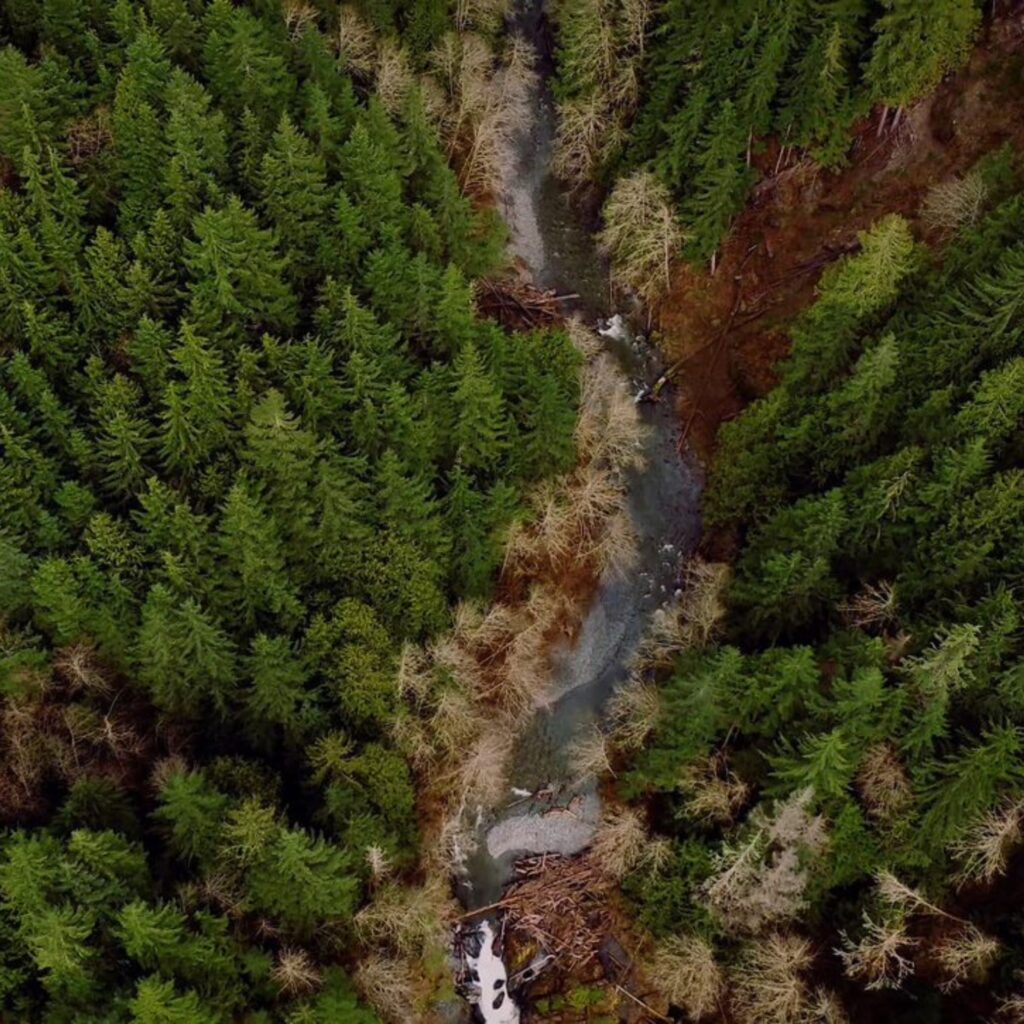
Whatcom Land Trust has now protected more than 26,000 acres of land through conservation easements, land ownership and facilitation. As the Trust takes on larger projects like Skookum Creek and Stewart Mountain, the importance of stewardship–our commitment to care for the land we protect–is clearer than ever.
“I think that people trust the work that we do because we have had almost forty years of experience, showing people that we do care for the land. Yes we initially protect the landscape by purchasing it or establishing a conservation easement, but then we don’t walk away,” notes Jenn Mackey. “We’re here forever and we take care of the lands that we protect. The Lummi Nation and Nooksack Indian Tribe are the original stewards of this land. As Stewardship Director, I’m assisting and helping to align our stewardship work so we can expand the community involved in taking care of the land we love.”
The Trust hosts one of the largest volunteer programs in the Pacific Northwest, and continues to engage more people and partners in their mission. This year more than 450 volunteers contributed more than 7,000 hours of work stewarding Whatcom Land Trust properties.
“The Land Trust community means people coming together on the land to celebrate each other and celebrate our connection to the land. We understand that in over a hundred years from now, well beyond our lifetime, the trees we plant will continue to grow and outlive us. And it’s really great to see five years from now the difference in the landscape after restoration work,” said Jenn.
Maple Creek Reach is a living demonstration of stewardship and partnership in action– property the community has helped restore and steward for 20 years. Historically, this land was cleared and leveled for agricultural use, until restoration work was started by Wandering Waters Farm. From 2003 to 2010, Whatcom Land Trust purchased over 100 acres and began the Maple Creek Reach Restoration project. Over years of work with local stewardship partners and hundreds of volunteers, a series of pools and mounds were created to help return the land to a forested wetland. A wide meandering creek was created with woody debris for salmon refuge and spawning. Today, all five species of salmon are returning to spawn in these side channels.
Visiting Maple Creek Reach, you can really see the long-term vision of the Land Trust to acquire, restore and continue to care for critical habitat adaptively–forever.
I think working on Land Trust properties helps people feel like they can make a difference in the larger problems that we face – climate change, habitat loss, pollution,” said Jenn. “It’s really the best way for people to get out and make a difference, and it’s a key component in how we are able to care for this land.”
Let’s Celebrate Together!
Forty years later, the Trust is rooted in the same values–to protect and restore Whatcom County lands with transparency, integrity and respect. “This work is to take an action to conserve the ecological integrity or the fertility of the land in a way that isn’t momentary. It’s not blocking a piece of legislation, it’s not putting up an ordinance that can be changed by the political winds that blow next week. It’s the most permanent commitment that we can make,” said Chris Moench.
You can join the Whatcom Land Trust Community–Sign up for our newsletter to watch for Land Trust celebrations and events throughout the 40th anniversary.

